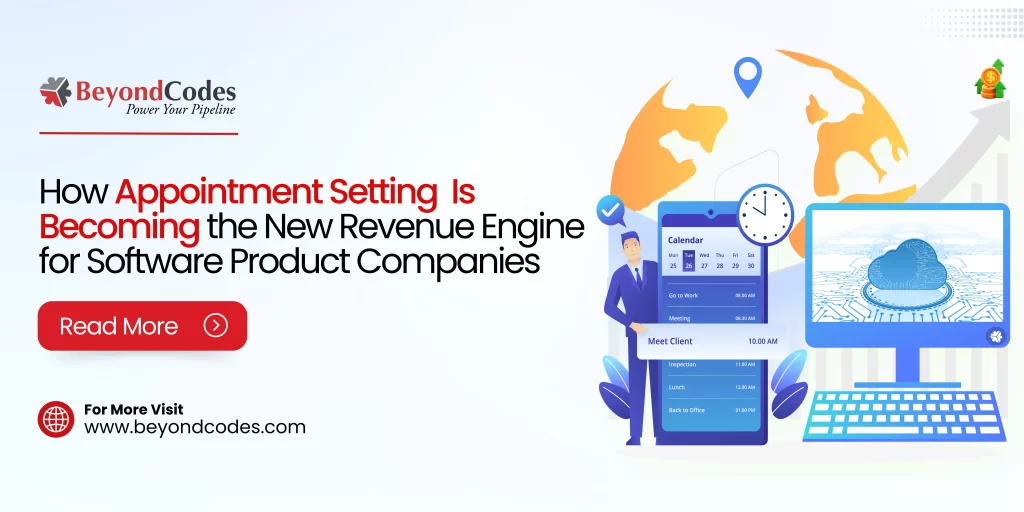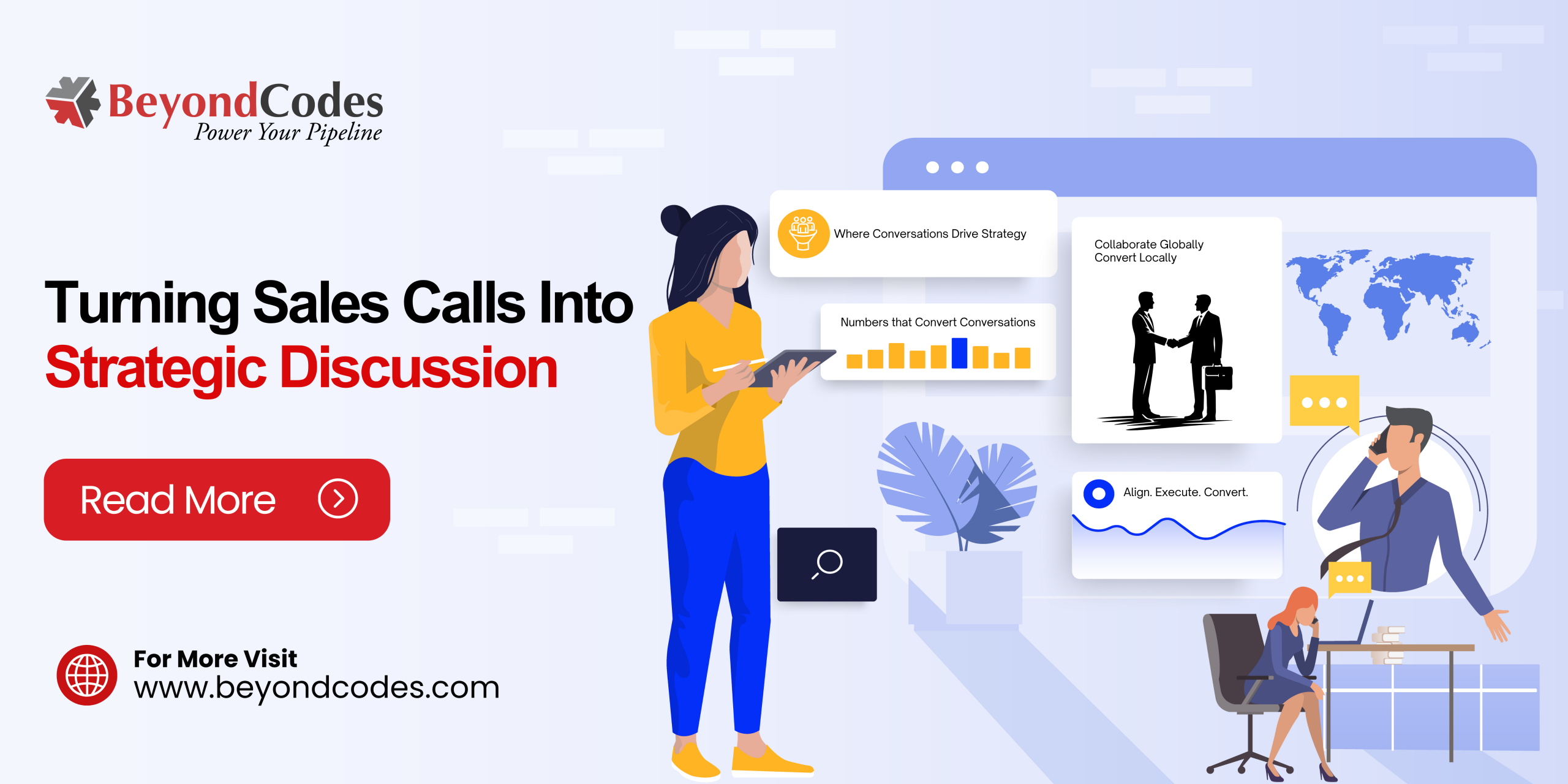In the world of software product sales, traditional appointment setting used to be a numbers game—volume over value. But not anymore.
Today, appointment setting has matured into a precision function—a strategic bridge between go-to-market motions and real revenue outcomes. It’s no longer about cold calling for the sake of activity metrics; it’s about opening curated, high-value conversations with influencers and decision-makers who are actively solving problems that your product was built to address.
Why Appointment Setting Is Evolving
The software product landscape is fiercely competitive. Buyers are smarter, cycles are longer, and attention is shorter. In this environment, it’s not the product demo that wins—it’s the context.
This is where modern appointment setting steps in: it crafts that context before a rep even enters the room (or zoom). It validates intent, ensures alignment, and filters for readiness. At its best, appointment setting is now a revenue function—not a support function.
Strategic Appointment Setting in Action
Let’s take a closer look at how this shift is helping software companies break into complex industries:
1. Manufacturing: Unlocking Conversations in Rigid Hierarchies
- Challenge: Manufacturing CIOs are notoriously hard to reach. Gatekeeping is fierce, and tech investments are scrutinized through multiple legacy lenses.
- Our Approach: We enabled a software product engineering company targeting smart factory deployments to build a vertical-focused narrative around energy efficiency, machine analytics, and post-pandemic supply chain resilience.
- Impact: Within 8 weeks, we landed 8 meetings with Key Influencers and Decision Makers across Tier-1 manufacturers in the U.S. Midwest, one of which turned into a $1.2M ARR pilot opportunity.
2. Healthcare: Navigating Compliance While Driving Growth
- Challenge: A HealthTech firm offering patient engagement solutions struggled to penetrate provider networks, where procurement is entangled with compliance and institutional politics.
- Our Approach: We created a persona-specific appointment playbook that mapped the top 3 concerns of CMOs (Chief Medial Officers) and CTOs: HIPAA compliance, digital front-door readiness, and EHR interoperability.
- Impact: 48 decision-maker meetings with CMOs (Chief Medial Officers) and CIOs across 4 major states in under 6 months—resulting in 3 POCs and a 200% boost in pipeline velocity.
3. Telecom: Breaking into the Cloud & Edge Conversations
- Challenge: A SaaS-based infrastructure orchestration platform wanted to engage telecoms modernizing their cloud-native networks—but kept hitting product/ops walls.
- Our Approach: We built industry-specific hooks tied to edge computing, 5G monetization, and OSS/BSS modernization—then targeted VPs of Network Strategy and Platform Architecture with tailored messaging.
- Impact: Opened direct conversations with 7 of the top 10 telecom providers across the U.S. and Europe, securing 3 high-value demos.
How to Optimize Your Appointment Setting Strategy
To turn appointment setting into a sustainable revenue engine, software product companies need to shift from tactical outreach to strategic orchestration. Here are key levers that separate high-performing appointment programs from generic outreach:
1. Define Your ICP Beyond Demographics
Go deeper than just “CTOs at mid-sized SaaS firms.” Layer in:
- Technographic triggers (e.g., recent migration to Kubernetes)
- Firmographic events (e.g., Series C funding, hiring spikes)
- Psychographic intent (e.g., job post language, event participation)
This ensures your outreach speaks to real-world priorities—not just titles.
2. Use Intent Data Intelligently
Don’t just buy a list—buy signals. Use 1st-party and 3rd-party intent data to:
- Prioritize accounts visiting key product pages
- Track content engagement across your ecosystem
- Surface buying committee members early in the cycle
Outreach based on intent + timing has 3x the conversion rate.
3. Build Industry-Centric Messaging
Generic cold emails don’t work. What works is:
- Industry pain framing (“In manufacturing, unplanned downtime costs X per hour”)
- Customer proof narratives (“We helped a peer reduce defect rates by 30%”)
- Language that mirrors their world (“OEE”, “CAQ”, “FHIR-compliant”)
Speak their language, not yours.
4. Tightly Align with Sales & Product Marketing
Appointment setting must not operate in a silo. Integrate:
- Sales battle cards and positioning decks
- Product roadmap inputs for relevance
- Feedback loops from AEs to refine targeting and messaging
This turns the appointment setting from “calendar-filling” to “pipeline-building.”
5. Qualify Ruthlessly—Then Personalize
Don’t book every meeting. Qualify with relevance filters and pre-conversion questions. Then personalize outreach based on:
- Their tech stack
- Recent announcements
- Role-specific challenges
Quality beats quantity every time.
Final Thought: Conversations Are Currency
In the age of saturated inboxes and content overload, conversations are currency.
Appointment setting, when done with precision and purpose, is the art of creating those conversations. For software product companies, it’s becoming the single most important lever to accelerate pipeline, drive revenue, and differentiate from the noise.
It’s no longer about “booking meetings.” It’s about orchestrating outcomes.
Let’s Talk—Because Conversations Drive Revenue
Beyond Codes don’t just book meetings—we engineer momentum.
From precision-based ICP targeting to high-impact engagements with key influencers and decision makers, we help software product companies turn cold outreach into qualified conversations that move the pipeline forward. Whether you’re breaking into new verticals like Manufacturing, Healthcare, or Telecom, or scaling outbound for a flagship product, our appointment setting programs are built to deliver revenue—not just reports. Ready to unlock your next decision-maker conversation? Let’s strategize how we can turn your appointment setting into your strongest revenue engine.
Author
-
With 7+ years of experience and a background in media & communication, she brings stories to life that fuel lead generation success. She transforms complex B2B ideas into content that is clear, engaging, and results-driven—helping key decision-makers take action. A good cup of coffee fuels her writing ideas, and when off the clock, she enjoys unwinding with her dog by her side.








